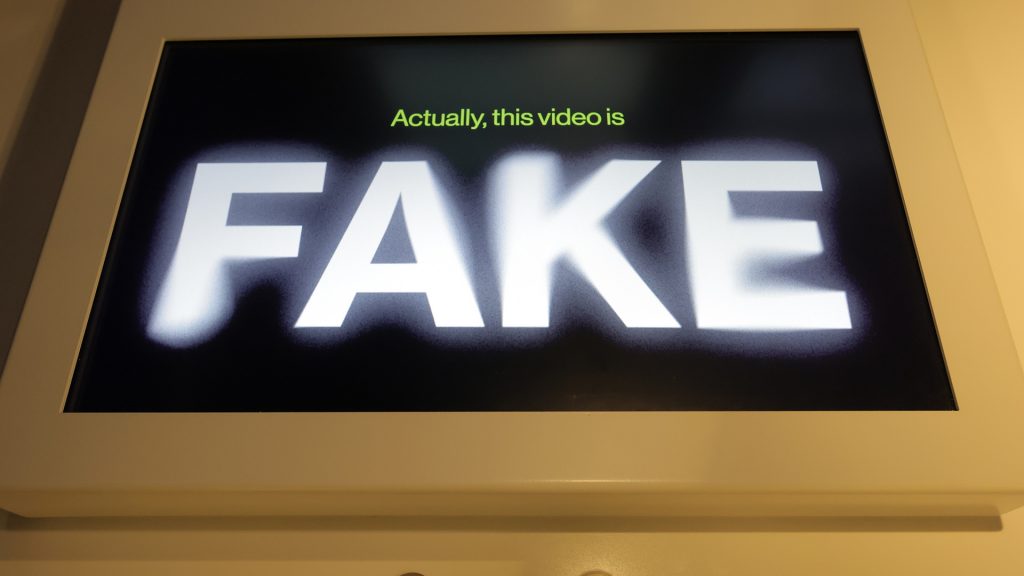AI videos have invaded local news as realism becomes indistinguishable

NBC Chicago aired a fake video generated by artificial intelligence during its newscast. It comes as AI-generated videos become more popular and difficult to spot, even for experts.
AI on the news
The video comes from a Facebook page that posts videos about a fake racetrack. This particular video showed the lights going out during a race, leading to several cars being involved in an accident.
NBC Chicago had a reporter talking about the story and even quoting from the caption that came with it. That caption was written in broken English.
“The power copany keeps cuttin the lites for a few secs every week to try to indimitate us into payin the bill,” the caption reads.
The reporter relayed that over the airwaves.
“We later found out the power company in the area cut the lights to intimidate the track owners into paying their electric bill on time,” the reporter said on air.
Had that been a real incident, it could have been a serious crime against an electric company.
“Humanity has grown thinking that seeing is believing,” Wael Abd-Almageed, professor of electrical and computer engineering at Clemson University, told Straight Arrow News. “That’s why NBC watched the video. Nobody even cared to think that it might be fake, which was very obvious.”
The person who runs the Facebook page found the whole thing to be funny.
“The way he said that with a straight face,” Howard Weaver said while laughing to The Drive. “You can’t trust anything nowadays.”
Local news stations, even in markets as large as Chicago, are chronically understaffed, and NBC Chicago has not commented on the report.
“It will keep happening way more often,” Abd-Almageed said.
Deceptive AI
While the video aired by NBC Chicago did look fairly realistic, a quick look at many of the other videos on that Facebook page make evident that it’s satirical AI.
Weaver told The Drive he made that clip using OpenAI’s new Sora 2 AI video generator. Sora 2 has exploded in popularity in its first few months on the market. While the technology has only been widely available for a few weeks, it’s already shown the potential to deceive viewers, even those choosing to run it as a news story.
In order to produce that video, Weaver said had to write three paragraphs into the prompt.
“Those social media videos, TikTok videos, Facebook videos that are going around at this time, it looks so realistic,” Kevin Matthe Caramancion, a misinformation researcher, told SAN.
Abd-Almageed said that while this incident didn’t do any real harm, it could in the future.
“If this has not been a joke, if this is something that has to do with politics or the stock market or terrorism or something like that; people have this tendency to believe any visual information right away,” Abd-Almageed said.
Fighting the deception
Both experts we spoke with showed optimism that humans will have tools to fight back against AI deception.
“AI will continue improving,” Abd-Almageed said. “Meanwhile, people on my side of the aisle, people in the detection community, we will also keep improving our tools.”
Those tools often come from the same place.
“The verification tools that we have to recognize, to detect if content is generated by AI is harnessing power from the same architecture that actually produces the AI,” Caramancion said.
Abd-Almageed said his team is releasing a new deepfake detection tool next month, the third generation of that tool.
“There will always be this sort of arms race, this cat and mouse game between people who generate deep fakes and people who detect deep fakes,” Abd-Almageed said.
While those tools can be useful, it’s still up to people to verify what they’re seeing.
“There is always going to be a need for humans to verify whatever news content,” Caramancion said. “It actually works on both ends of the spectrum, the news content poster and also the human news consumer.”
The other option the experts pointed to is relying on social networks detecting AI-generated content.
“By flagging content, social networks will be able to slow down the visceral effect, slow down the notion that seeing is believing,” Abd-Almageed said. “If anybody had looked at this car racing video with a little flag next to it saying this is AI generated, it probably wouldn’t have appeared on NBC.”
However, that’s not happening very often. A recent report from The Washington Post found that only 1-in-8 social media sites flagged an uploaded AI video as not real.
“The solution to addressing this visual misinformation problem is not just a technology issue, it’s a marriage between technology and regulation,” Abd-Almageed said.
The post AI videos have invaded local news as realism becomes indistinguishable appeared first on Straight Arrow News.





